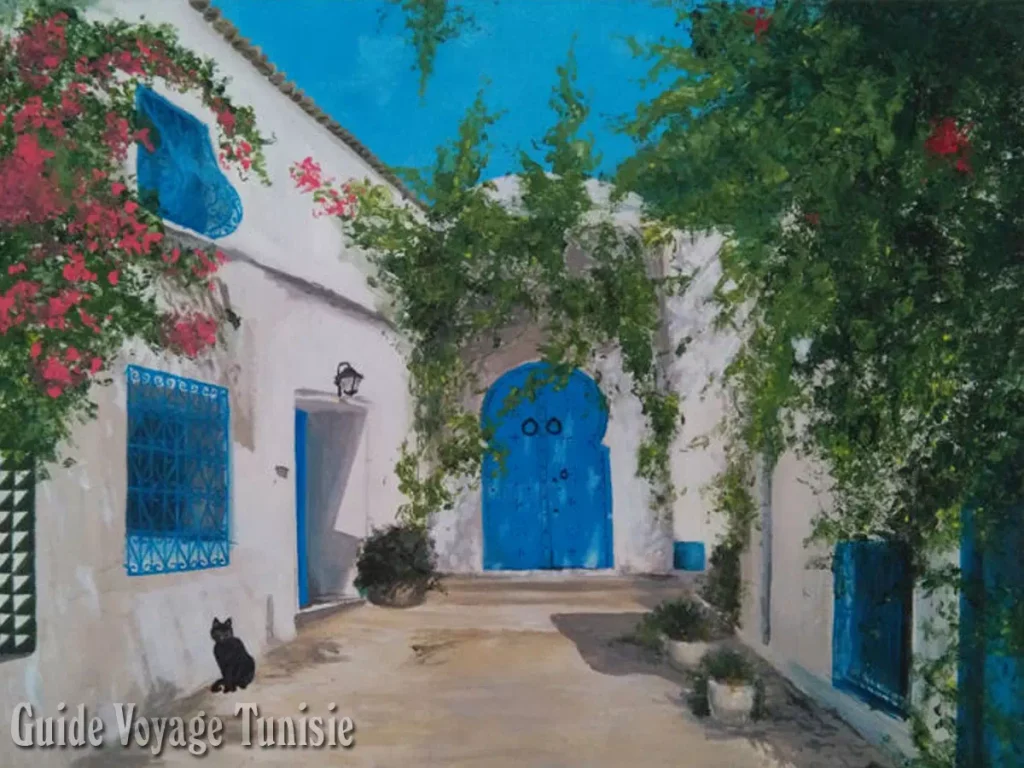Sidi Bou Said Village
In Sidi Bou Said village , the visitor is captivated by the beauty and originality of the place. Cobbled streets, fuchsia and white bougainvillea and moucharabiehs, the small village of 5,000 inhabitants was the first protected site in the world. Attached to Carthage, the village has been classified by UNESCO as a World Heritage Site since 1979. Perched on a hill, Sidi Bou Saïd proudly dominates Carthage. Its history begins with the Carthaginians and the Romans. In the 11th century, the Almoravids chose this strategic place for the defense of the coasts.
Later, Khalaf Ben Yahia Tamimi El Beji settled in Djebel Menara on the heights, taught Sufism and stood guard on the coast. It is undoubtedly from this period that the mysticism of the place dates. The sailors were convinced that the man ensured their protection. When he died in 1231, a zaouia was built and it was not until the 17th century that the village took the name of its protector, Sidi Bousaid.
At that time, the Tunisian bourgeois appreciated the splendid view and the freshness of the alleys. They build sumptuous villas of Arab-Andalusian architecture without really taking into account an urban plan. Today we are no longer surprised to see these houses scattered here and there. This is also what makes the charm of the village.
Baron Rodolphe d’Erlanger is the other man who made Sidi Bou Saïd famous. A lover of music and the arts, he had a passion for the architecture of the village. Thanks to his pleas, in 1915 a decree protects Sidi Bou Said from anarchic constructions and obliges the owners of the houses to respect the blue and white color. Today, the Maison d’Erlanger houses the Center for Arab and Mediterranean Music.
Tunisians like to come there, walk in the narrow streets and breathe in the smells of tea and jasmine. On weekends, the Café des Nattes and the Café Sidi Chaabane are always full. There reigns an atmosphere of nonchalance, an artistic scent left by the passage of many artists and writers. Simone de Beauvoir, Colette, André Gide or Michel de Foucault never got tired of this village where they could stroll for hours watching the bay of Carthage and the waves of the Mediterranean. We imagine them lying down at the Café des Nattes, sipping a mint tea. Some are lucky enough to live there, to feel this incomparable atmosphere on a daily basis. Some tourists choose to stay in one of these family houses transformed into guest rooms and many enjoy an evening in a gourmet restaurant whose terrace overlooks the sea. All Tunisians have walked the cobbled streets dreaming of one of these two-tone houses that only exist in Sidi Bou Said.
Sidi Bou Said in pictures

